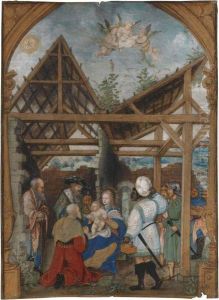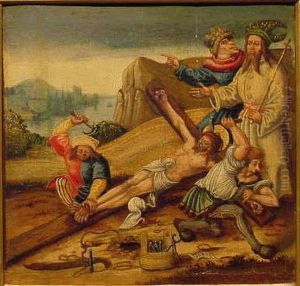Nikolaus I Glockendon Paintings
Nikolaus Glockendon was a pivotal figure in the Northern Renaissance, particularly within the realm of manuscript illumination and miniature painting. Born around 1490 in Nuremberg, a city renowned for its artistic and cultural vibrancy during the Renaissance period, Glockendon was part of a family deeply entrenched in the arts; he was the son of Georg Glockendon the Elder, a respected illuminator, which suggests that Nikolaus's initial training was within his family workshop. His work is often associated with the continuation and development of the rich tradition of German manuscript illumination, a craft that was profoundly influenced by earlier masters such as Albrecht Dürer, also from Nuremberg.
Glockendon's career flourished in the early 16th century, a time when the demand for illuminated manuscripts and miniatures was high amongst the European elite, despite the growing popularity of printed books. He is known to have worked extensively for the Habsburg court, particularly under the patronage of Albert of Brandenburg, the Archbishop of Mainz, who was a significant commissioner of art at the time. Glockendon's works for the Archbishop and other patrons are notable for their intricate detail, vibrant color palette, and the incorporation of religious and secular themes, reflecting the complex societal and religious dynamics of the period.
Throughout his career, Nikolaus I Glockendon was recognized for his ability to blend traditional Gothic elements with the emerging Renaissance ideals of humanism and naturalism. This synthesis is evident in his detailed landscapes, expressive figures, and the use of perspective, which showed a clear departure from the more static and stylized forms of medieval art. His works, ranging from lavish liturgical books to smaller devotional texts, not only served as vehicles of piety and education but also as symbols of prestige and power for their owners.
Glockendon's legacy is somewhat overshadowed by the monumental figures of the Renaissance, and much of his work was for a long time attributed to other artists. However, recent scholarship has begun to highlight his contributions to the art of manuscript illumination, recognizing him as a master of his craft. He died in 1534, leaving behind a body of work that continues to be studied for its artistic and historical significance. His influence persisted through his descendants, as the Glockendon family workshop remained active in Nuremberg for generations, contributing to the enduring legacy of the Northern Renaissance.

